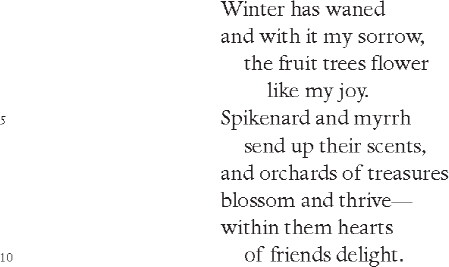NAHUM
(second half of the thirteenth century)
Since the mid-nineteenth century scholars have speculated as to the identity of the talented liturgical poet who signed his poems NAHUM. Some have identified him as the fourteenth-century Moroccan writer Nahum HaMa‘aravi, who wrote poetry and translated several important commentaries from Arabic to Hebrew, and whose epithet (HaMa‘aravi—the Westerner, or Maghrebi) appears to be alluded to at the end of the poem below. All the other extant evidence, however, seems to argue against that attribution. Another source mentions a penitential poem by one Nahum of Castile, from the second half of the thirteenth century. Whoever our Nahum was, subsequent poets particularly admired two of his hymns—including the me’ora, or “poem of light,” translated here—and they often sought to imitate them. (For more on the me’ora see the glossary at the back of this volume.) Both employ a delicate music to create sensuous and seemingly secular surfaces, extolling the virtues of spring and its delights. They do this with such grace and deftness that only at the end, and in the subtlest fashion, is the liturgical—and messianic—dimension of the poem revealed. Just twelve of Nahum’s poems have come down to us, some of them in manuscripts dating from around 1300. A number of his poems have been included in Sephardic prayer books.

WINTER HAS WANED

